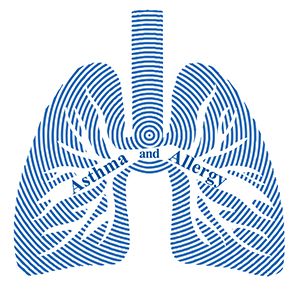Allergic Conditions of the Skin
Atopic Dermatitis (Eczema)
Atopic dermatitis is an inflammation of the skin characterized by itchy, red, dry, and cracked skin. It typically starts in childhood with symptoms waxing and waning with age. In children, the rash typically starts on the cheeks and on creases in front of the elbows and back of the knee and may spread all over the body. In adults, hands, feet, neck and behind the ears are commonly affected. Scratching causes increased risk of skin infections and scarring.
Atopic dermatitis is caused by a complex interplay of genetics, immune system abnormalities, environmental factors, and compromised skin barrier. It often coexists with the “allergic triad” of Atopic Dermatitis, Allergic Rhinitis and Asthma. Allergy testing for inhalants and foods is performed to find the factors exacerbating the triad. The offending agents can thus be avoided or not consumed. Allergy injections or SLIT can be initiated to desensitize against unavoidable inhalants . Irritants like hjousehold cleaners, soaps, detergents, fabric softeners, fragrances, woolen fabrics , dry weather, cigarette smoke and stress can all exacerbate symptoms. Initial treatment includes appropriate bathing, moisturizing cream, topical steroids, and oral medications for itching. Those with persistent symptoms may be prescribed other treatments such as calcineurin inhibitors, biologics, and phototherapy.
URTICARIA (HIVES) and ANGIOEDEMA
Urticaria, commonly known as Hives, is a type of rash that presents as raised, itchy bumps that typically shift from place to place on the body. They tend to last a few hours to a few days. These commonly occur in response to an infection or an allergic reaction, in which case they clear up spontaneously in about 4 to 6 weeks. If they last more than six weeks, they are considered Chronic Urticaria and need further investigation to rule out other causes such as autoimmune disorders. Less commonly, they can be secondary to physical stimuli (cold / heat / pressure / vibration / sunlight etc.). Having asthma or allergic rhinitis increases the likelihood of getting hives. Appropriate Evaluation is necessary. Treatment includes detection and avoidance of the allergens, oral antihistamines, steroids, epinephrine, leukotriene inhibitors and biologicals such as Xolair.
Angioedema is swelling of the deeper layers of the skin, usually coming in episodes, affecting the lips, face, tongue, throat, abdomen, or extremities. The cause of angioedema can be allergic, such as due to foods, insect stings, or medications. Certain medications such as ACE Inhibitors and NSAIDS can be the cause. Hereditary Angioedema runs in families and is due deficiency or defect of an enzyme called C1-Esterase Inhibitor.
